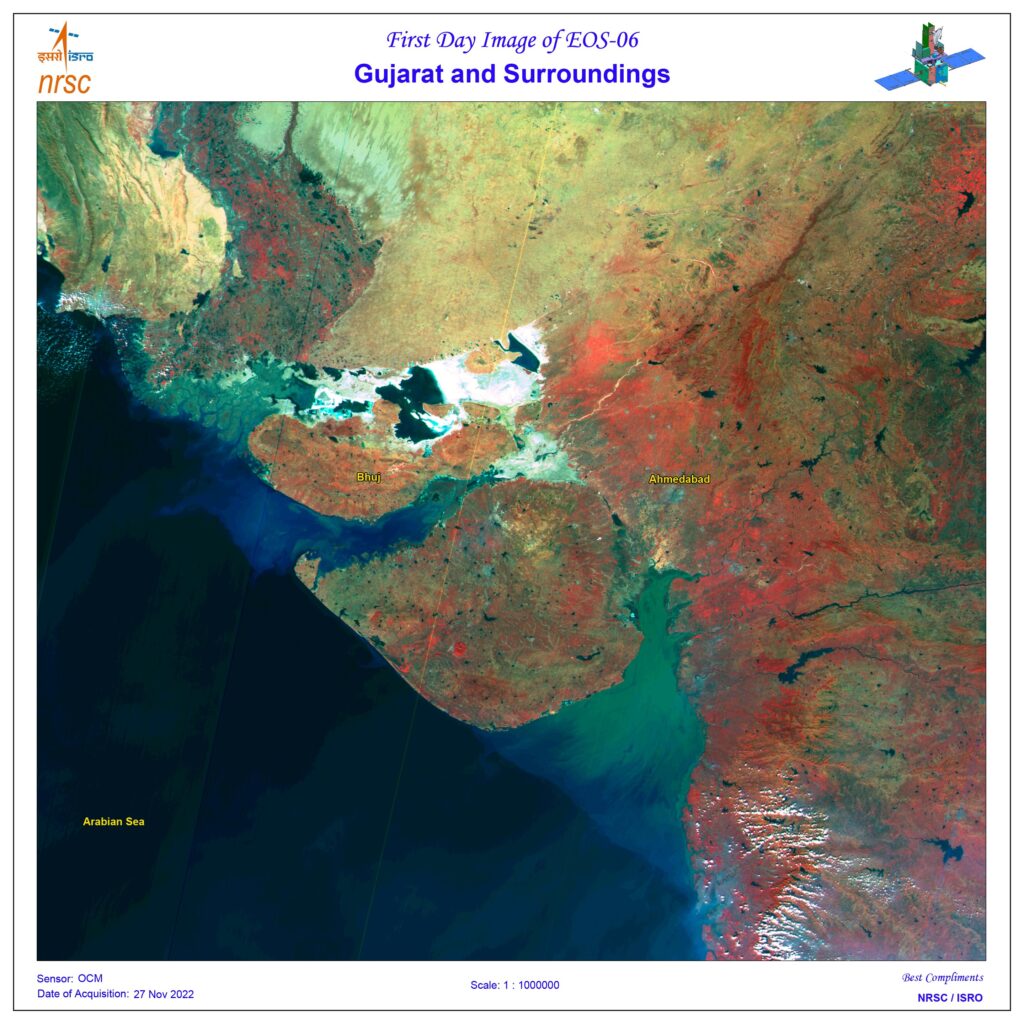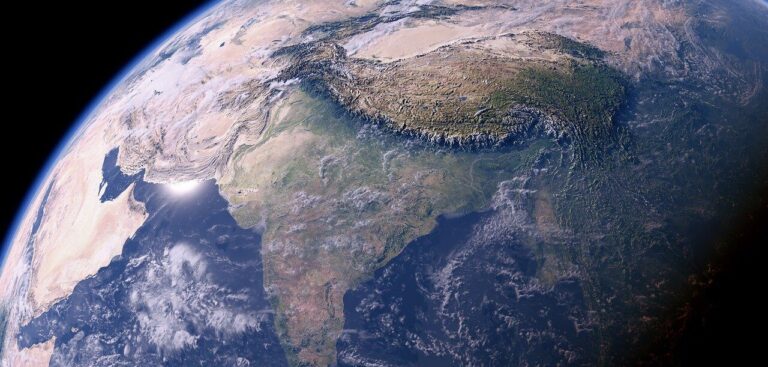India’s third-generation satellite for monitoring oceans – Earth Observation Satellite-6 (EOS-6), also known as Oceansat-3, has begun transmitting its first images of Earth after reaching orbit.
Launched by the Indian Space Research Organisation (ISRO) in partnership with Ministry of Earth Sciences (MoES) on November 26, 2022, the ocean observing mission is a follow up to OceanSat-1 (IRS-P4) and OceanSat-2 launched in 1999 and 2009, respectively. The satellite was launched aboard the Polar Satellite Launch Vehicle (PSLV) on its 56th flight (24th flight of the PSLV-XL version) along with several other small commercial satellites (CubeSats).
Oceansat-3 was placed in polar orbit at around 740km above sea level. For the first time in the series it houses three ocean observing sensors including Ocean Color Monitor (OCM-3), Sea Surface Temperature Monitor (SSTM), and Ku-Band scatterometer (SCAT-3).
The advance 13 channel OCM with 360m spatial resolution and 1,400km swath will observe the day side of the Earth every day and will provide crucial data on distribution of ocean algae which is the base of the food chain within marine ecosystem.
The SSTM will provide ocean surface temperature which is a critical ocean parameter to provide various forecasts ranging from fish aggregation to cyclone genesis and movement. Temperature is a key parameter required to monitor health of the coral reefs, and if needed, to provide coral bleaching alerts.

Credit: NRSC ISRO
The Ku-Band Pencil beam scatterometer on board EOS-6 will provide high-resolution wind vector (speed and direction) at the ocean surface. The data of temperature and wind is also very important for assimilation into ocean and weather models to improve their forecast accuracies.
The additional ARGOS instrumentation is a communication payload jointly developed with France and it is used for low-power (energy-efficient) communications including marine robotic floats (Argo floats), fish-tags, drifters, and distress alert devices useful for conducting effective search and rescue operations.



